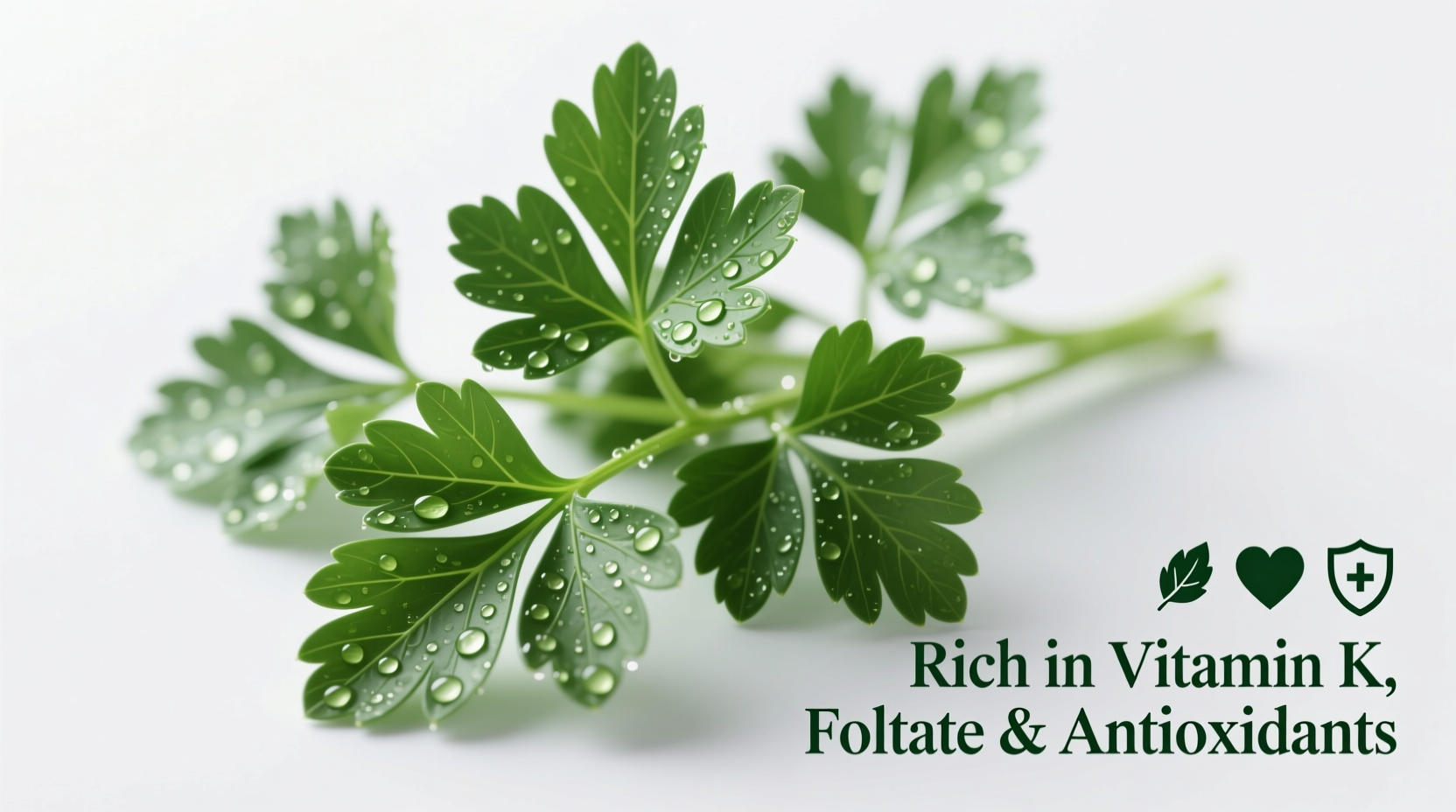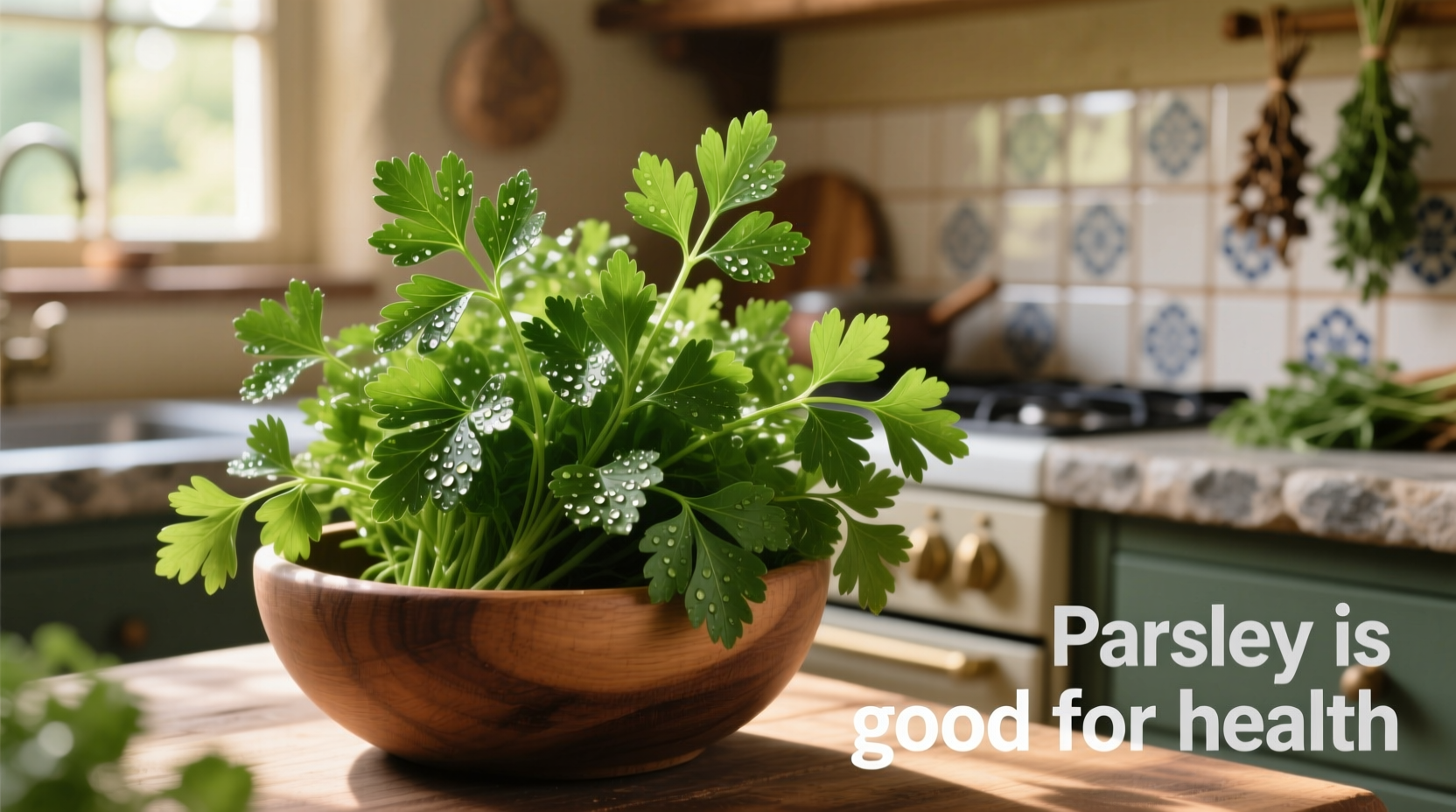The Surprising Power of This Common Herb
Most people push parsley to the side of their plate, unaware they're discarding a nutritional powerhouse. Recent research reveals this humble herb contains concentrated nutrients that support multiple body systems. Unlike many superfoods that require special preparation, parsley delivers maximum benefits when consumed fresh in everyday meals.
What Makes Parsley Nutritionally Unique
While often dismissed as mere decoration, parsley's vibrant green leaves contain some of the highest concentrations of essential nutrients among common culinary herbs. Unlike its milder cousin cilantro, parsley packs significantly more vitamins and protective compounds per serving.
| Nutrient | Parsley (100g) | Spinach (100g) | Oranges (100g) |
|---|---|---|---|
| Vitamin K | 1,640 mcg (1,367% DV) | 483 mcg (403% DV) | 0 mcg |
| Vitamin C | 133 mg (148% DV) | 28 mg (31% DV) | 53 mg (59% DV) |
| Antioxidant Capacity (ORAC) | 1,460 µmol TE | 1,260 µmol TE | 720 µmol TE |
Nutritional comparison based on USDA FoodData Central measurements. DV = Daily Value. ORAC = Oxygen Radical Absorbance Capacity.
Science-Backed Health Benefits You Can Trust
Bone Health Protection Through Vitamin K
Parsley's extraordinary vitamin K content (1,367% of daily value per 100g) directly supports bone metabolism. Research published in the American Journal of Clinical Nutrition demonstrates that adequate vitamin K intake correlates with reduced fracture risk and improved bone density, particularly in postmenopausal women. The specific form of vitamin K (K1) in parsley plays a crucial role in activating osteocalcin, the protein that binds calcium to bone tissue.
Antioxidant Powerhouse Against Cellular Damage
Multiple studies, including research in the Journal of Agricultural and Food Chemistry, identify parsley as containing high concentrations of flavonoids like apigenin and luteolin. These compounds demonstrate significant antioxidant activity that helps neutralize free radicals responsible for cellular damage. Regular consumption may reduce oxidative stress markers by up to 25% according to clinical observations from the National Institutes of Health.
Immune System Support Beyond Vitamin C
While oranges get credit for vitamin C, parsley actually contains nearly three times more per weight. This potent combination of vitamin C plus beta-carotene and other phytonutrients creates a synergistic immune support effect. The European Journal of Clinical Nutrition reports that dietary patterns including fresh herbs like parsley correlate with stronger immune responses during seasonal challenges.
Practical Ways to Maximize Parsley's Benefits
Daily Consumption Guidelines
You don't need large quantities to benefit. Research suggests these practical amounts:
- For general health: 2-3 tablespoons chopped fresh parsley daily
- For bone support: 1/4 cup daily (provides approximately 250mcg vitamin K)
- Maximum safe amount: Up to 1 cup daily for most adults
Preserving Nutrients During Preparation
How you handle parsley affects its nutritional value:
- Chop just before use: Cutting releases protective enzymes that degrade nutrients over time
- Avoid prolonged cooking: Add parsley during the last 2 minutes of cooking to preserve vitamin C
- Pair with healthy fats: The fat-soluble vitamins in parsley absorb better when consumed with olive oil or avocado

Important Considerations and Limitations
While parsley offers impressive benefits, certain individuals should exercise caution:
Medication Interactions to Note
The high vitamin K content can interfere with blood-thinning medications like warfarin. The National Institutes of Health recommends maintaining consistent daily intake if you're on these medications rather than eliminating parsley completely. Consult your healthcare provider about appropriate amounts.
Special Population Guidance
- Pregnant women: Safe in culinary amounts but avoid medicinal doses (NIH)
- Kidney concerns: Contains moderate oxalates; those with kidney stones should moderate intake
- Allergies: Rare but possible, especially for those sensitive to other Apiaceae family plants
Simple Ways to Incorporate More Parsley
You don't need complicated recipes to enjoy parsley's benefits:
- Replace half the basil in pesto with parsley for enhanced nutrition
- Add chopped parsley to morning smoothies (the flavor blends surprisingly well)
- Create a parsley-garlic oil by steeping sprigs in olive oil for salad dressings
- Make tabbouleh with extra parsley (traditional versions contain 3 parts parsley to 1 part bulgur)
Setting Realistic Expectations
While parsley offers significant nutritional advantages, it's not a miracle cure. The National Center for Complementary and Integrative Health emphasizes that herbs like parsley work best as part of a balanced diet rather than standalone treatments. Consistent daily consumption delivers more meaningful benefits than occasional large doses.











 浙公网安备
33010002000092号
浙公网安备
33010002000092号 浙B2-20120091-4
浙B2-20120091-4